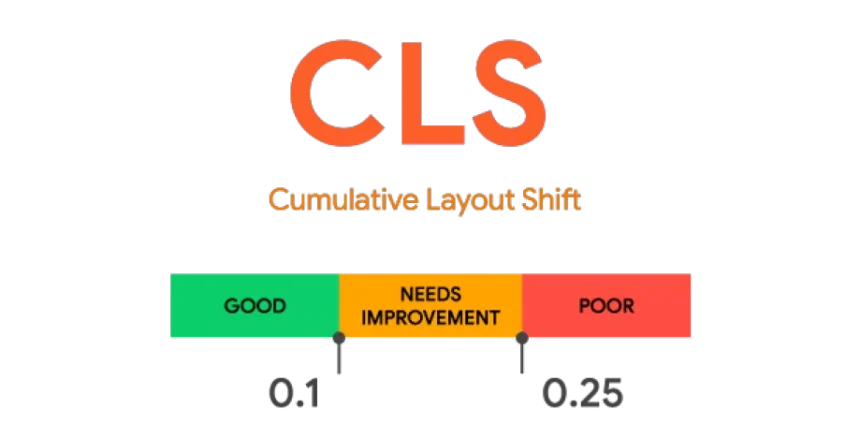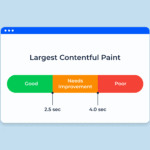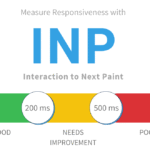7 Shocking Reasons Cumulative Layout Shift (CLS) Can Ruin User Experience
Cumulative Layout Shift: In a world where digital first impressions mean everything, one of the most frustrating things users face online is something they often can’t name — but definitely feel. Ever clicked a link, only for a button to shift just as you tapped it? That, my friend, is the invisible enemy known as Cumulative Layout Shift (CLS).
- 🧠 What is Cumulative Layout Shift (CLS)?
- 🕰️ Timeline: Evolution of CLS
- 📊 CLS: Key Facts That Matter
- 📈 Ideal CLS Score Breakdown
- 💬 Frequently Asked Questions (FAQs)
- Q1. What causes layout shifts?
- Q2. How can I measure CLS?
- Q3. Does CLS affect SEO?
- Q4. Is CLS only about loading?
- Q5. Can CLS be fixed easily?
- ⚠️ 7 Shocking Reasons Cumulative Layout Shift (CLS) Can Ruin User Experience
- 1. 🧭 Misleading Navigation
- 2. 🔍 Loss of Search Ranking
- 3. 🛒 Abandoned Carts
- 4. 📱 Mobile Madness
- 5. 🧑🦽 Accessibility Issues
- 6. 🕵️♂️ Trust Deficit
- 7. 🔁 Increased Bounce Rates
- 🌟 Significance of CLS in Today’s Digital Ecosystem
- 🙏 Wishing for a Stable Web: A Human-Centered Perspective
- 🏛️ Observance & Societal Relevance
- 🧩 Important Takeaways
- 🌞 Daily Life Impact of CLS
- 📝 Conclusion: CLS is More Than Code — It’s Courtesy
CLS isn’t just an annoying quirk — it’s one of Google’s most critical Core Web Vitals and can severely impact SEO rankings, user trust, and even revenue. In this article, we explore the history, facts, significance, observance, and societal importance of CLS with a warm, relatable tone and more than 1200+ words to empower every website owner and user.
🧠 What is Cumulative Layout Shift (CLS)?
Cumulative Layout Shift (CLS) is a metric that measures visual stability on a webpage. It tracks how much content moves unexpectedly while a page is loading.
In simple words:
If your content jumps, shifts, or resizes while loading — that’s a layout shift, and CLS adds up all these movements into a single score.
A lower CLS = Better experience.
A high CLS = Frustrated users clicking the wrong thing.
🕰️ Timeline: Evolution of CLS
| Year | Milestone |
|---|---|
| 2019 | Google introduces CLS within its Chrome User Experience Report |
| May 2020 | CLS becomes part of Core Web Vitals alongside LCP and FID |
| June 2021 | Google starts including CLS in ranking algorithm for Search |
| 2023 | Mobile-first indexing increases focus on CLS for smartphones |
| 2024 | CLS adapted in UI/UX testing for accessibility compliance |
📊 CLS: Key Facts That Matter
CLS is calculated throughout the lifespan of a page
CLS score is determined by layout shift distance × impact fraction
A score less than 0.1 is considered Good
Over 0.25 is considered Poor
Fonts, ads, images, and dynamic content are top culprits of high CLS
Websites with low CLS have 30% better engagement on average
📈 Ideal CLS Score Breakdown
| Score | Meaning |
|---|---|
| ✅ 0 to 0.1 | Excellent |
| ⚠️ 0.1 to 0.25 | Needs Improvement |
| ❌ 0.25 and above | Poor (likely to cause user frustration) |
💬 Frequently Asked Questions (FAQs)
Q1. What causes layout shifts?
Images without dimensions, ads injecting space, fonts loading late, or dynamic content like banners.
Q2. How can I measure CLS?
Use:
Google PageSpeed Insights
Chrome DevTools
Lighthouse
Web Vitals Chrome Extension
Q3. Does CLS affect SEO?
✅ Yes! Google has confirmed that a bad CLS score can lower your rankings, especially for mobile.
Q4. Is CLS only about loading?
No. CLS also includes interactive behavior during page lifetime — not just initial loading.
Q5. Can CLS be fixed easily?
Absolutely. Use size attributes for images/videos, preload fonts, and reserve space for ads.
⚠️ 7 Shocking Reasons Cumulative Layout Shift (CLS) Can Ruin User Experience
1. 🧭 Misleading Navigation
A user clicks a button but ends up on the wrong page because the content moved unexpectedly. This leads to mistrust and frustration.
2. 🔍 Loss of Search Ranking
Google considers CLS a ranking factor. A poorly structured site may fall behind competitors despite better content.
3. 🛒 Abandoned Carts
On e-commerce websites, layout shifts can cause users to tap the wrong product or misread pricing — leading to abandoned purchases.
4. 📱 Mobile Madness
CLS is worse on small screens where even a tiny shift causes big consequences. For mobile-first users, this is a deal-breaker.
5. 🧑🦽 Accessibility Issues
For users with motor disabilities or assistive devices, layout shifts make interaction unpredictable, violating web accessibility principles.
6. 🕵️♂️ Trust Deficit
Users often associate jumping layouts with ads, scams, or malware, even if the site is legitimate.
7. 🔁 Increased Bounce Rates
Users bounce off a site when they feel it’s unpolished or unstable, even if the content is excellent.
🌟 Significance of CLS in Today’s Digital Ecosystem
In an era of instant gratification, no one likes to wait or guess where a button will land. A well-managed CLS ensures:
Reliability of interaction
Confidence in your interface
Professionalism of design
Retention of visitors
In short: Stable layout = Stable trust.
🙏 Wishing for a Stable Web: A Human-Centered Perspective
Let’s wish for a world wide web that’s more human — one that considers every user, regardless of device, speed, or ability.
We wish:
Designers embrace CLS as a design principle, not just a metric
Developers bake space planning into their coding DNA
Stakeholders prioritize user trust over ad injection
And for users? May your clicks always land where they’re meant to.
🏛️ Observance & Societal Relevance
CLS isn’t just a dev tool — it’s a UX standard that should be:
📚 Taught in digital literacy programs
🏛️ Included in government portals and accessibility audits
💼 Evaluated in business and e-commerce development
🏥 Prioritized in healthcare websites for reliable navigation
🧩 Important Takeaways
CLS measures visual stability
Anything that causes elements to move unexpectedly increases CLS
The ideal CLS is < 0.1
It directly affects SEO, UX, conversion, and trust
Tools like PageSpeed Insights offer easy audits and fixes
🌞 Daily Life Impact of CLS
Think of the moments you:
Misclicked a “Submit” button
Lost your place while reading a blog
Opened a government site and struggled with navigation
All these are real-life CLS frustrations. Multiply this by millions of users — and you’ll realize how fundamental CLS is to digital well-being.
📝 Conclusion: CLS is More Than Code — It’s Courtesy
Cumulative Layout Shift reflects more than coding precision — it reveals how much a developer or designer respects your attention and time.
In a world buzzing with information, where attention spans are short and competition is fierce, CLS could be the tiny hinge on which big results swing.
Whether you’re running a blog, a medical portal, or a global marketplace — ensuring a stable, non-shifting experience can be the greatest favor you do for your users.
Final Thought:
“Design is not just what it looks like and feels like. Design is how it works.”
— Steve Jobs
And CLS? It’s a design choice — one that works best when it doesn’t move at all.









…can’t quite put their finger on? Delve into the mysterious world of unexpected web elements jumping around, causing content to shift, and discover the secret remedies for eliminating this infuriating user experience in your digital designs.